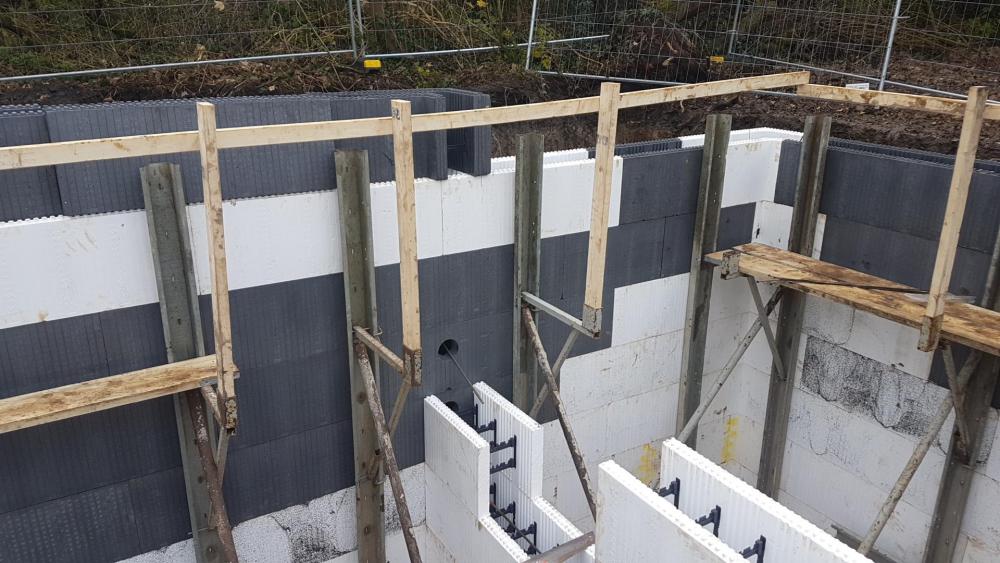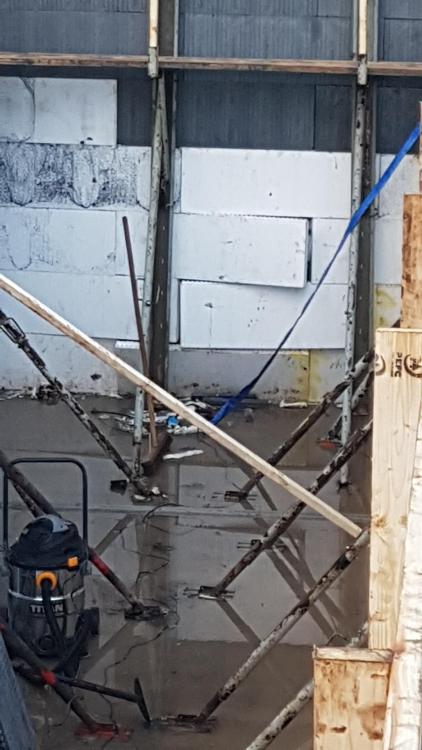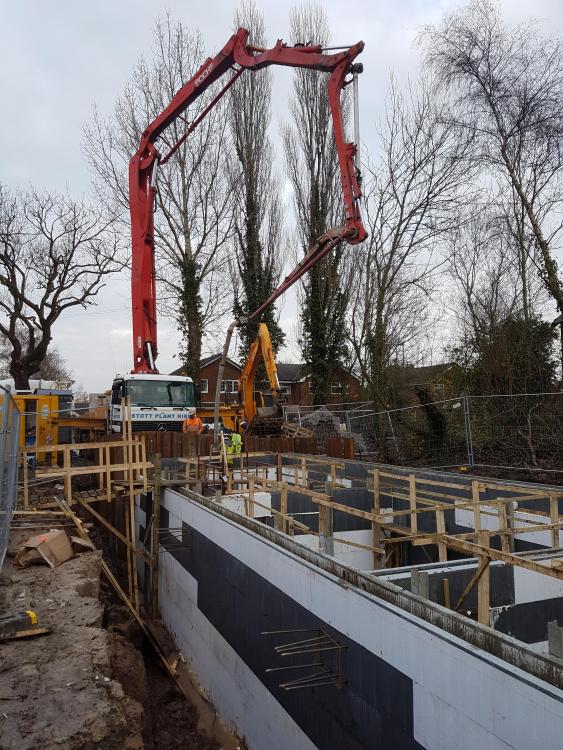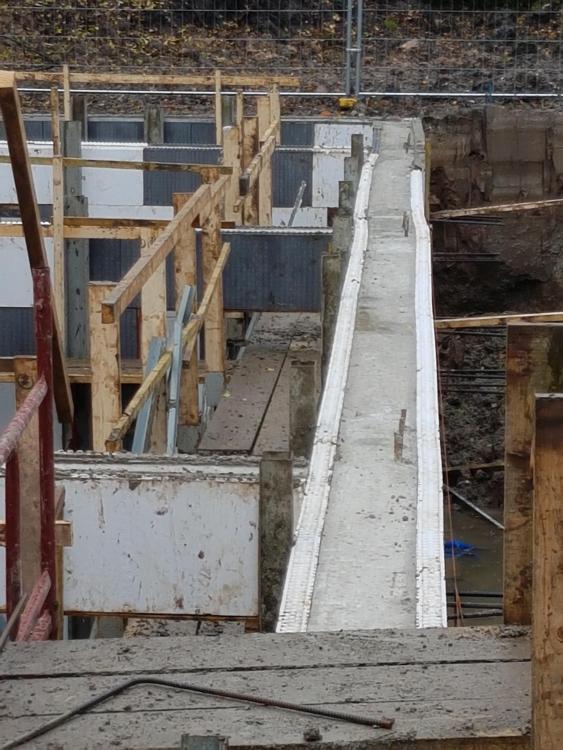Who knew clay was so heavy?
Before I carry on, let's answer the question I posed in the last blog entry. I posted this picture of the basement rear wall, showing how we had joined the cross wall to the side wall (following the suggestion of the boss of Logix UK, who had attended site whilst the walls were being assembled (and even assembled some of them himself) as part of our on-site training:
The problem here is that this wall is supposed to form part of the watertight barrier of the basement. The concrete had to be continuous. But of course, with this design it wasn't continuous - we only had pockets of concrete, 5" deep, every 16" up the wall. Structurally, it was more than up to the job. From a watertightness perspective, it was about as useful as a chocolate teapot.
But we didn't even think about this until much, much later. About 6 months after the concrete pour for the basement walls, in fact. By which time, remedial action became very complicated and very expensive.
Let's return to the blog timeline...
So, basement walls were constructed in about 8 elapsed days, which amounted to 5.5 days on-site. I was suitably impressed. 2 faces of steel rebar was set into the external walls, at 200mm centres vertically and horizontally. This was at the behest of our waterproofing specialist, who had overruled the SE. From a structural perspective, the SE had calculated that a single face of H12 rebar at 200mm centres was more than adequate to reinforce our 10" thick concrete walls and withhold the ground pressure. Our waterproofing guy said "the more steel the better, because it'll control the cracking better". So, with the steel not actually being that expensive, we ordered double the steel, and put 2 faces in.
Thank goodness we did. Remember the bank at the back that was propped on 4 acrows? They were rated at 1 tonne each. 3 days before the concrete pour, they failed overnight. A shelf of clay, weighing perhaps 6 tonnes, forced one of the acrows to deflect enough to destabilise the lot, and the shelf gave way, slid down the back of the excavation, and smashed into the polystyrene wall.
Unbelievably, the wall, supported by the ICF bracing system, held. Here's a photo of the damage:
The bracing upright was bent to the tune of 10 degrees or so, and most of the studs that interlock the ICF blocks had sheared off. But because of that 2nd face of steel rebar, the wall resisted the impact, and the subsequent dead weight, of the clay against it. It took 2 hours and a few extra steel supports, but we managed to force the blocks back together, and brace it up sufficiently that it would take the concrete pour.
And a 3 days later, that's what we did. The concrete pour was moderately uneventful, as these things go.
Apart from the pump getting blocked, because a piece of hardened concrete had made it into the mix in the batching plant, and then completely blocked the 3" reducer we were using:
It took nearly an hour to dismantle the pump, knock that lump of concrete out, and reassemble the pump. The concrete firm said they'd have to charge us for the concrete wagon sitting outside doing nothing. I replied that was fine, but they were picking up the tab for the pump since they'd blocked it. They said for me not to worry, and apologised for any delays they had caused...
Oh, and one more problem - where the T-walls had been made, I hadn't braced the outside of the side walls sufficiently (or at all, truth be told!). This led to some substantial bulging of the side wall in a couple of places, which I had to shore up as a bit of an emergency ? The concrete was poured, and the walls started to harden pretty much as soon as it was poured. Here's the bulging:
Ahem. Nothing to see here, move along. ?
At least the shoring / bracing held.







12 Comments
Recommended Comments
Create an account or sign in to comment
You need to be a member in order to leave a comment
Create an account
Sign up for a new account in our community. It's easy!
Register a new accountSign in
Already have an account? Sign in here.
Sign In Now